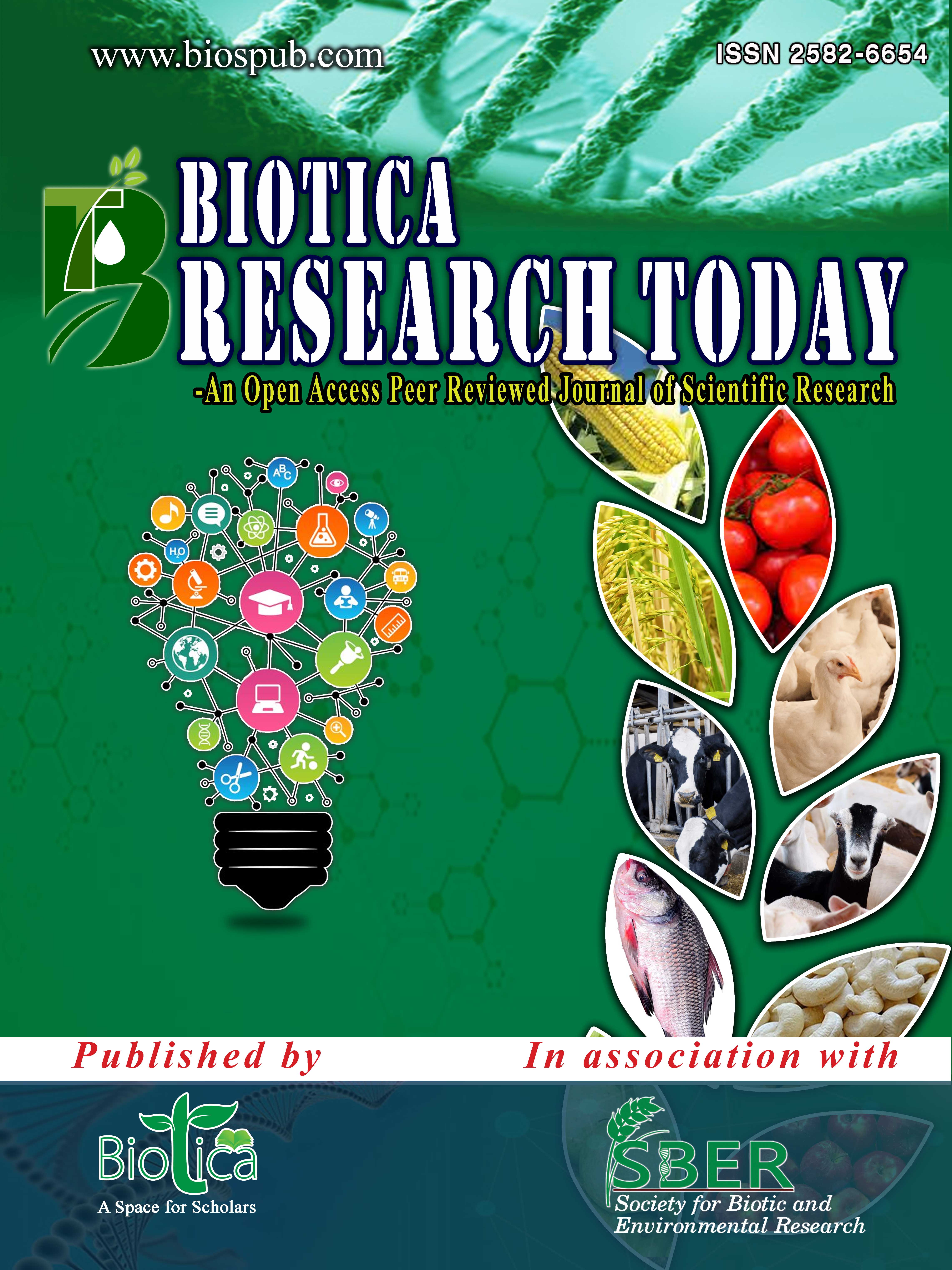Dynamics of Organic Residue Decomposition and Mineralization of Nutrients in Soil
DOI:
https://doi.org/10.54083/ResBio/2.3.2020.113-116Keywords:
Decomposition, Mineralization, Nitrogen, Nutrients, Organic residuesAbstract
The present study was undertaken to investigate “Dynamics of Organic Residue Decomposition and Mineralization of Nutrients in Soil” during the year 2018-19 at Soil Science and Agricultural Chemistry Section, College of Agriculture, Nagpur. The experiment was laid out in completely randomized design (CRD) with nine treatments replicated thrice. The treatments were absolute control in T1, cowdung mixture in T2, paddy straw in T3, wheat straw in T4, sugarcane trash in T5, gliricidia lopping in T6, subabul leaves in T7, soybean stalks in T8, greengram stalks in T9. Subabul leaves mixture (T7) recorded maximum ammoniacal nitrogen and nitrate nitrogen throughout experimentation. Gliricidia lopping mixture ranked 1st by recording maximum P mineralization for 30, 60 (7.33 mg kg-1), 90 (7.55 mg kg-1) and 120 (7.45 mg kg-1) days of experimentation. Sulphur mineralization was also found highest in T6 by application of gliricidia lopping mixture during experimentation. Hence, for fast decomposition and nutrient mineralization legume residue is more efficient than cereal or other organic residue.
Downloads
Downloads
Published
How to Cite
Issue
Section
Categories
License
Submission of a manuscript implies that when the manuscript is accepted for publication, the authors agree to automatic transfer of the copyright to the publisher (or grant the Publisher exclusive publication and dissemination rights). The Biotica, as the publisher, has the right to enter into any agreement with any organization in India or abroad engaged in reprography, photocopying, storage and dissemination of information contained in this journal. The Biotica has no objection in using the material, provided the information is being utilized for academic purpose but not for commercial use. Due credit line should be given to Biotica where information will be utilized.









 |
|


